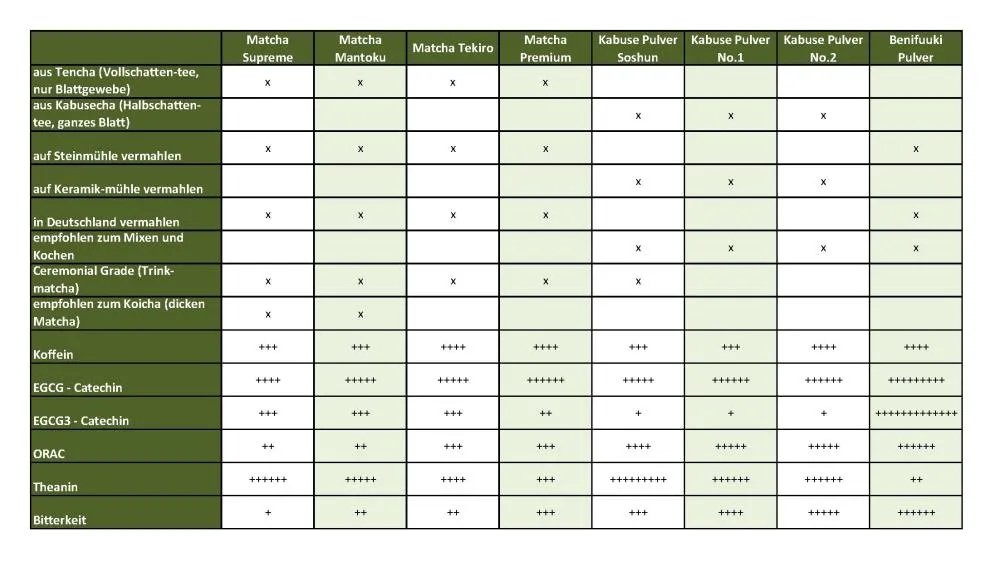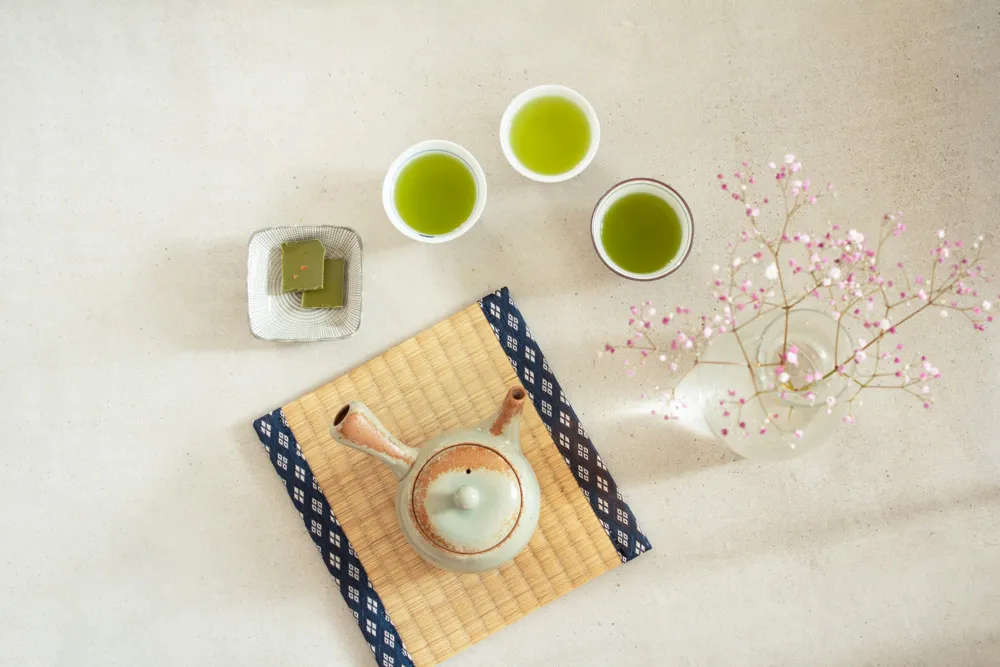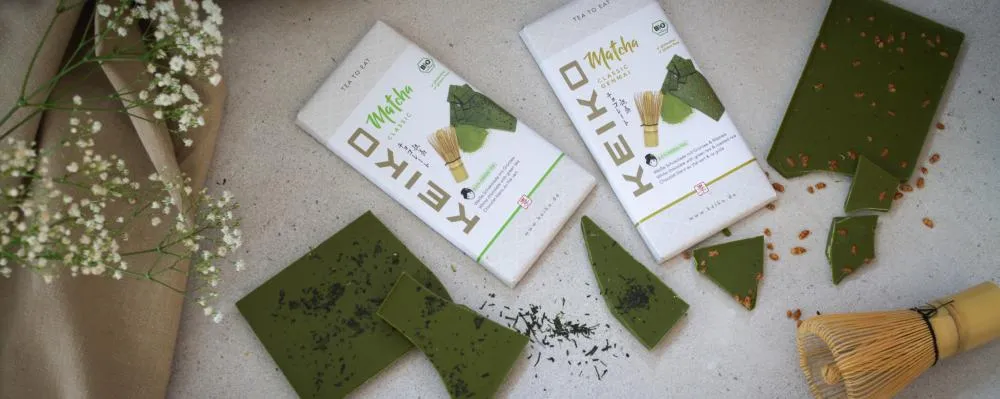Matcha Production
Directly translated, the term matcha simply means powdered tea. According to the traditional understanding, the following applies to real matcha:
- Only fully shaded tea: The tea plants are covered with nets that only allow about 10% of the light to pass through. This allows the plants to produce a lot of chlorophyll, theanine and caffeine, but few bitter flavours.
- Only Tencha: After steaming, drying and breaking the harvested leaves, the leaf tissue is separated from the leaf veins in a stream of air. Only the delicate, flake-like leaf tissue parts called "tencha" are used.
- Only milled on granite stone mills: The slow-turning granite stones produce a unique fineness that not only creates a pleasant mouthfeel, but also a particularly aromatic, mild flavour compared to the faster matcha mills made of ceramic or other materials.

Matcha - freshly milled!
To avoid loss of quality due to long delivery times, we have relocated KEIKO Matcha production to Diepholz. Matcha and benifuuki powder is packaged here in a nitrogen atmosphere to ensure that the matcha is always fresh. This keeps the fine powder fresh for a particularly long time. From the moment it is filled, the tea no longer comes into contact with oxygen. When stored in a cool place until the bag is opened at home, the ageing process is reduced to a minimum. This means you can enjoy KEIKO Matcha as fresh as if the powder had come straight from our mills.

Experience Matcha as if in Japan – with Matcha freshly milled in Germany
The Tencha leaves used for traditional Matcha are shaded with nets that allow only up to 10% of the light to penetrate, so the plants produce more chlorophyll, theanine caffeine but fewer tanning agents.
After steaming and drying the leaves are broken up and by means of an airflow technique the heavier stems and veins of the leaves are separated from the lighter leaf tissue. These flake-like parts of the leaves are what is called Tencha. These parts of the leaves have the highest content of ingredients like vitamin A, caffeine, theanine, chatechines (EGCG etc.) and chlorophyll.
These Tencha flakes are then milled on designated granite stone mills to a powder. The grain size is key for the quality of the final Matcha powder. After whisking the tea there should not be any noticeable grains in your mouth. Also the same raw material will be less bitter the smaller the particle size of the powder. The finest powder can be achieved only with the granite stone milling, other simpler versions are the quick ball mills or ceramic mills.

Shimodozono is - to our knowledge - operating the only Japanese granite stone mills in Europe. This way, KEIKO-Matcha can be milled freshly on site in Diepholz, Germany, packaged under a protective nitrogen atmosphere and shipped promptly - so you can enjoy the KEIKO Matcha in an unrivaled freshness!
Not all Matcha is the same!
Comparing Matcha and other Green Tea Powders
While “real” Japanese Matcha following the traditional definition includes only tea powders made from the leaf tissue (Tencha) only of the fully shaded tea plant, ground deliberately on special granite milling stones. Nonetheless tea powders that have been shaded less intensively or not at all or were milled with different techniques do have their own merits and are masters of their own field. Find an overview of the properties of the different KEIKO tea powders in the table below..
Kabuse-Powder is a type of green tea powder that is an absolute all-rounder. It is made from the whole leaf of tea plants that are shaded to only 50% instead of the 90%-shading used for Tencha. By using the whole leaf and less shading the Kabuse-Powders contain more tanning-agents and less chlorophyll than Matcha, and are therefore not quite as mild and well-rounded in taste but are no less rich in mineral nutrients. Kabuse-Powder can be whisked up pure just like Matcha, but is better fit for most other purposes than the traditional Version. The strong aroma that results from the higher content of tanning agents makes the tea-aroma stand out better when combined with other ingredients, than the subtle flavors of Matcha could. Regardless of its application it works well cocktails, ice cream, milk-shakes as well as for cooking and baking.
Benifuuki-Powder is also called the “catechine-tea”. It is made from the tea-variety Benifuuki which is especially rich in EGCG and EGCG3. This led to its popularity in Japan as a natural remedy for Allergies like hay fever. Different from the loose leaf Benifuuki tea, the powder has a very intense astringent flavor. We recommend using only half of the amount used to prepare a regular Matcha, while increasing the amount of water. Because of this intensity Benifuuki-Powder has a very high yield. Aficionados like the pure version, some prefer it as an addition to other beverages or dishes, for example prepared cool as a refreshing drink with water and lemon or apple juice.







